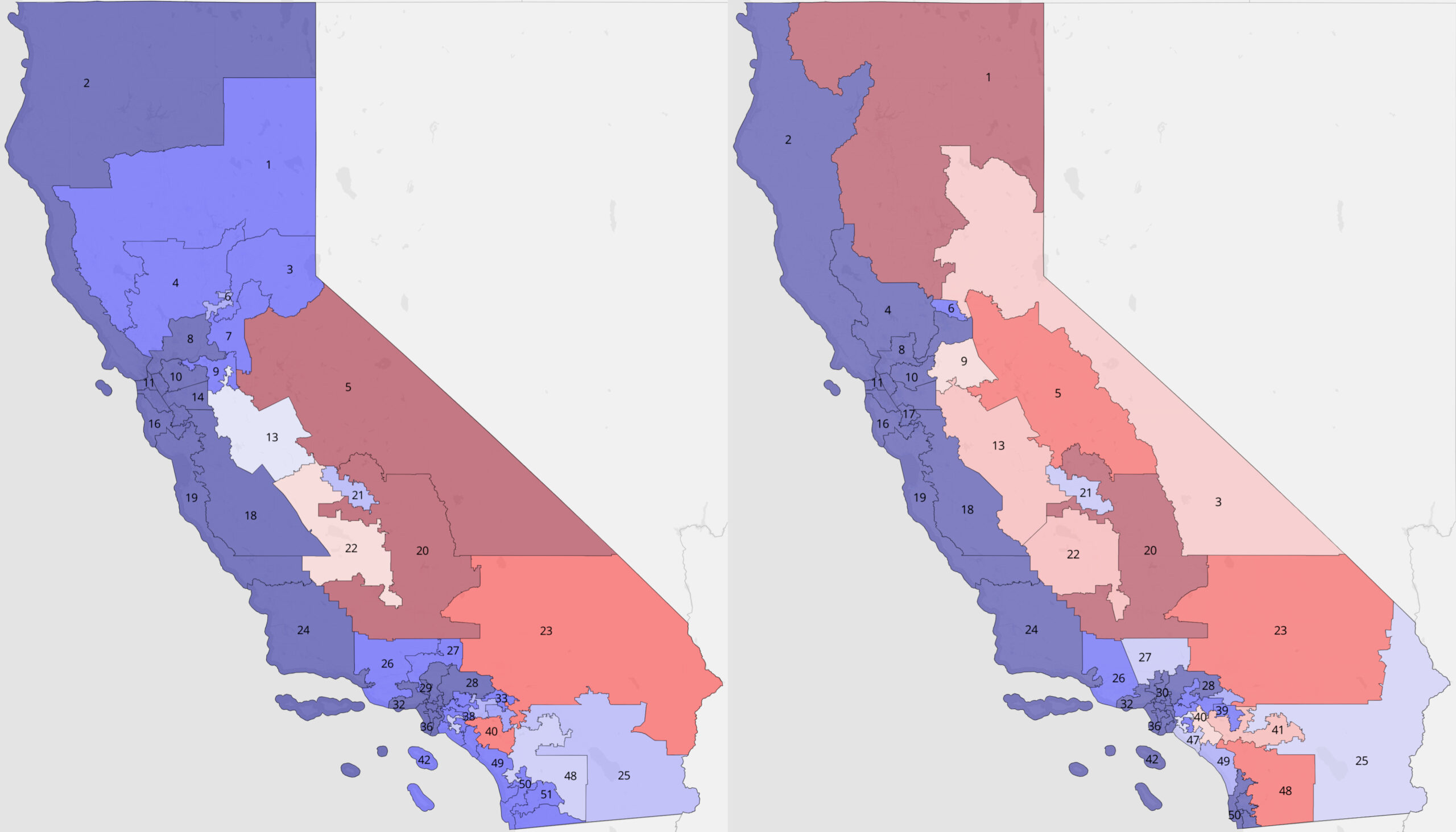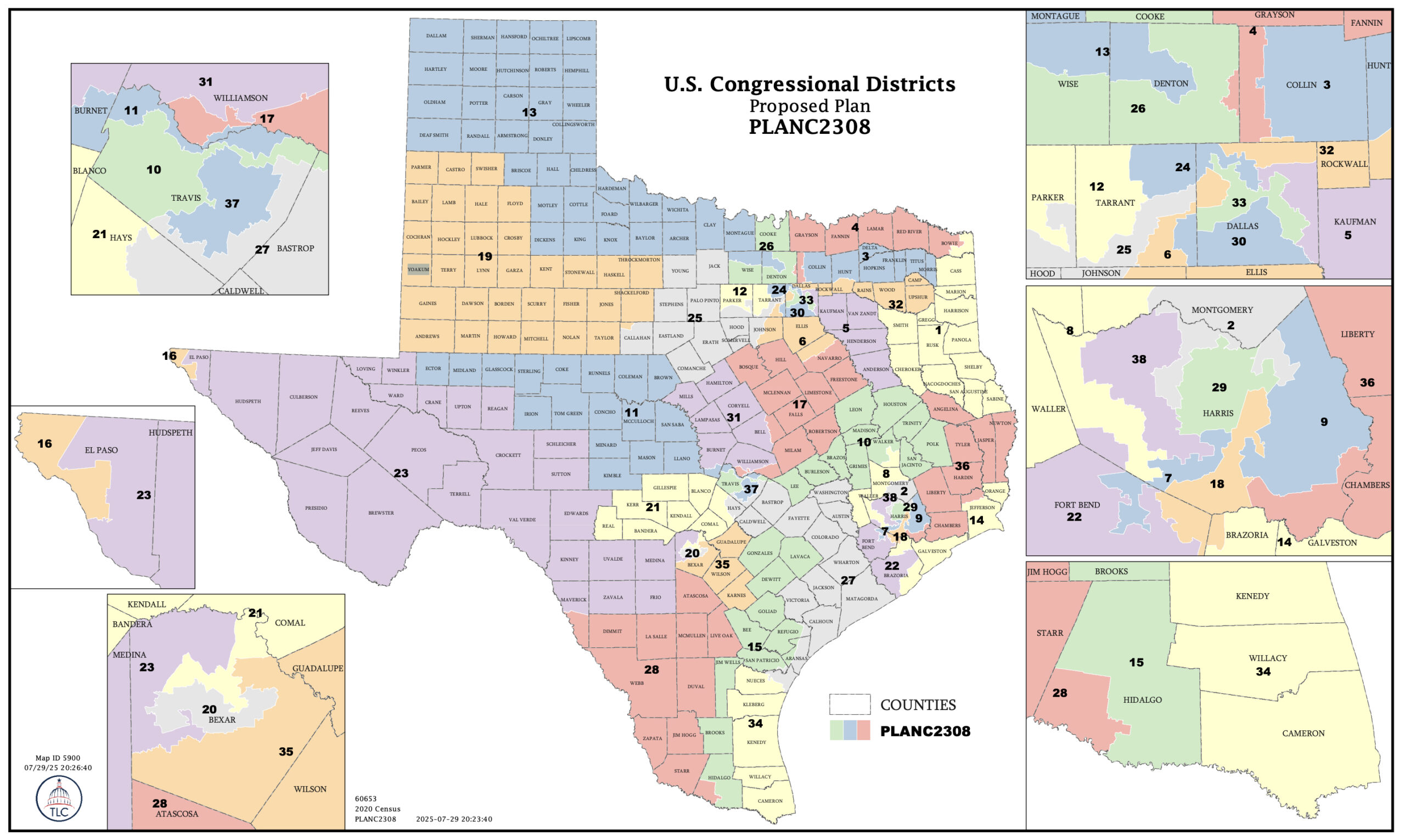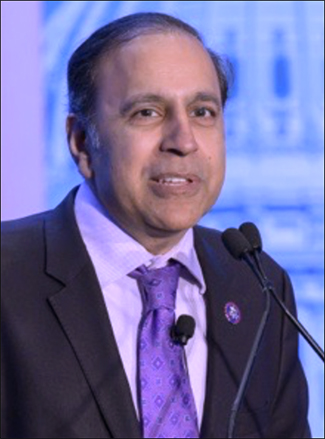By Jim Ellis — Wednesday, Aug. 20, 2025
Senate
For the first time this year, Sen. John Cornyn has posted a polling lead over Attorney General Ken Paxton in their 2026 Texas Republican primary battle.Emerson College tested the Lone Star State electorate (Aug. 11-12; 1,000 registered Texas voters; 491 self-identified Texas Republican voters; multiple sampling techniques) and the results project Sen. Cornyn only edging AG Paxton by a scant 30-29 percent, but the survey clearly shows positive movement for the veteran incumbent.
A dozen Republican primary polls, including the current Emerson College study, have been released since the beginning of the year from 12 different pollsters (eight Republican firms, one Democratic pollster, and three university research departments).
Though the Emerson data still shows weakness for Sen. Cornyn, it detects a vastly improved incumbent standing. In the 11 polls conducted prior to Emerson’s, Paxton averaged a lead of just under 16 percentage points. In seven of the 11, the three-term AG reached or topped the 50 percent mark.
More data needs to be studied in order to confirm this new trend, especially since the Emerson poll consisted of registered voters as opposed to those likely to cast their ballot in a Republican primary. Additionally, the sample size of 491 self-identified Republicans is low for a state the size of Texas and one where GOP primary turnout reached almost 2 million voters the last time Sen. Cornyn appeared on the ballot (2020). Furthermore, the fact that Sen. Cornyn only reached a 30 percent preference figure is also a negative sign for a four-term incumbent within his own party.
Conversely, the results clearly show movement in Cornyn’s favor and coincide with a recent Cornyn campaign blitz designed to intensify a Paxton negative personal image. The new poll results suggest the Cornyn campaign strategy is working as Paxton is losing support even though the Senator’s preference number doesn’t yet appear to be rising. In the previously mentioned dozen polls, Emerson inclusive, Sen. Cornyn’s average is 33.2 percent.
The 2026 Texas Senate race will be exorbitantly expensive. In 2024, Sen. Ted Cruz (R) and then-Rep. Colin Allred (D), including approximately $64 million in outside expenditures that helped both candidates, spent an aggregate of $266 million. It is probable that such an amount will be equaled or topped in 2026.
According to the 2nd Quarter Federal Election Commission financial disclosure reports for the current election cycle, Sen. Cornyn has raised over $9.8 million for the 2026 campaign and holds almost $9 million in his campaign account. Paxton reported campaign receipts of $2.9 million with slightly over $2.5 million cash-on-hand.
Because he is a recently announced 2026 candidate, Allred has not yet had to file a disclosure report for the current campaign. For his 2024 effort, Allred raised over $94 million, a total that ranked as fourth-best among all Senate candidates. Therefore, we can again expect to see him well-funded for the coming campaign.
There is still some discussion that former Congressman, ex-US Senate, and former presidential candidate Beto O’Rourke could enter the ’26 Senate campaign. If he were to become a candidate, the Democratic primary would also become competitive. Since the Allred announcement, however, talk of an O’Rourke Senate campaign has faded, though the former El Paso Congressman is certainly politically active.
O’Rourke began raising money to fund the state House Representatives who fled Texas in order to prevent obtaining a quorum in the special legislative session. The politicians made their move to at least postpone the legislature from passing a new congressional redistricting map.
Because a law was passed to fine any member who purposely missed session for legislative purposes, O’Rourke went to work funding a non-profit political organization to pay the amassed fines. A Texas judge has struck down his effort, however, since the law purposely prevented political money from being used to pay the personal fines.
Along with Arkansas and North Carolina, the March 3 Texas primary is the earliest in the nation. Therefore, we can expect to see heavy political action coming from the Lone Star State during the latter half of this year.







